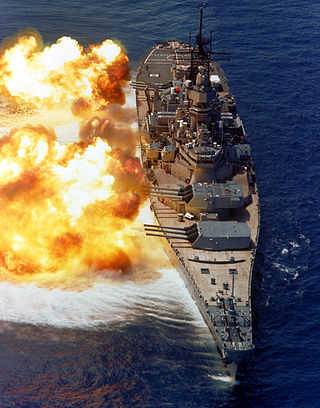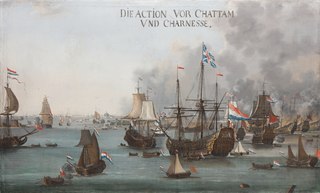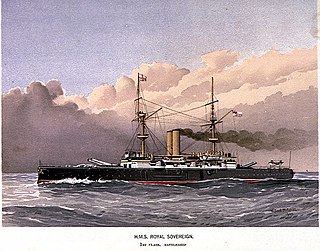This is a list of Royal Navy ship names starting with M and N.
This is a list of Royal Navy ship names starting with M and N.

A battleship is a large, heavily armored warship with a main battery consisting of large-caliber guns, designed to serve as capital ships with the most intense firepower. Before the rise of supercarriers, battleships were among the largest and most formidable weapon systems ever built.
Several ships and one submarine of the Royal Navy have borne the name HMS Dreadnought in the expectation that they would "dread nought", i.e. "fear nothing". The 1906 ship, which revolutionized battleship design, became one of the Royal Navy's most famous vessels; battleships built after her were referred to as 'dreadnoughts', and earlier battleships became known as pre-dreadnoughts.

A warship or combatant ship is a ship that is built and primarily intended for naval warfare. Usually they belong to the armed forces of a nation. As well as being armed, warships are designed to withstand damage and are typically faster and more maneuverable than merchant ships. Unlike a merchant ship, which carries cargo, a warship typically carries only weapons, ammunition and supplies for its crew. Warships usually belong to a navy, though they have also been operated by individuals, cooperatives and corporations.

The Raid on the Medway, during the Second Anglo-Dutch War in June 1667, was a successful attack conducted by the Dutch navy on English warships laid up in the fleet anchorages off Chatham Dockyard and Gillingham in the county of Kent. At the time, the fortress of Upnor Castle and a barrier chain called the "Gillingham Line" were supposed to protect the English ships.

Pre-dreadnought battleships were sea-going battleships built from the mid- to late- 1880s to the early 1900s. Their designs were conceived before the appearance of HMS Dreadnought in 1906 and their classification as "pre-dreadnought" is retrospectively applied. In their day, they were simply known as "battleships" or else more rank-specific terms such as "first-class battleship" and so forth. The pre-dreadnought battleships were the pre-eminent warships of their time and replaced the ironclad battleships of the 1870s and 1880s.

The dreadnought was the predominant type of battleship in the early 20th century. The first of the kind, the Royal Navy's HMS Dreadnought, had such an effect when launched in 1906 that similar battleships built after her were referred to as "dreadnoughts", and earlier battleships became known as pre-dreadnoughts. Her design had two revolutionary features: an "all-big-gun" armament scheme, with an unprecedented number of heavy-calibre guns, and steam turbine propulsion. As dreadnoughts became a crucial symbol of national power, the arrival of these new warships renewed the naval arms race between the United Kingdom and Germany. Dreadnought races sprang up around the world, including in South America, lasting up to the beginning of World War I. Successive designs increased rapidly in size and made use of improvements in armament, armour, and propulsion throughout the dreadnought era. Within five years, new battleships outclassed Dreadnought herself. These more powerful vessels were known as "super-dreadnoughts". Most of the original dreadnoughts were scrapped after the end of World War I under the terms of the Washington Naval Treaty, but many of the newer super-dreadnoughts continued serving throughout World War II.